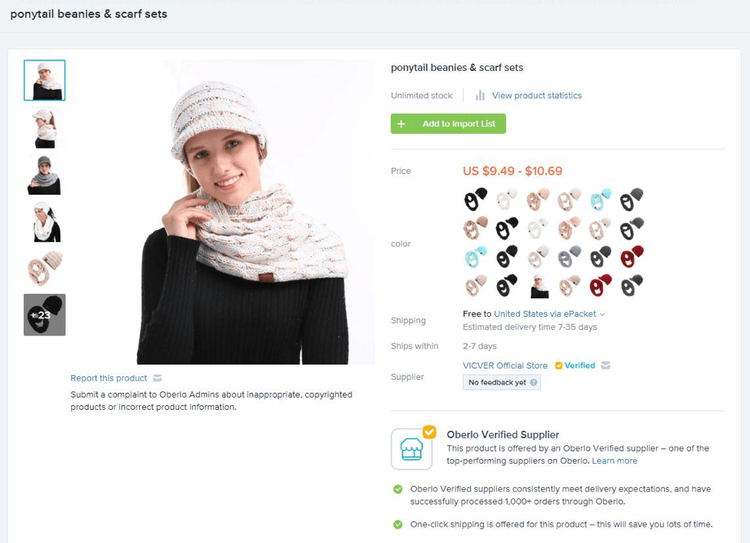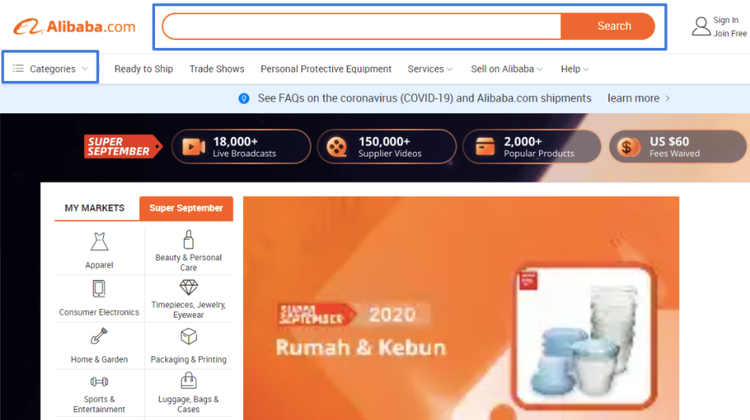A Beginner's Guide to Product Sourcing
On the surface, product sourcing is a pretty straightforward process. You identify your product, find a supplier, fill your inventory, sell your items online, and you’re all set. But the process is really much more complicated than that.
Finding quality products at great prices and with good profit margins requires research and trial and error. Plus, with online shoppers projected to increase to 278.33 million by 2024 in the U.S. alone, online selling will only become more competitive, making it even more difficult for e-commerce business owners to source their products.
Overview: What is product sourcing?
Product sourcing is the process of obtaining quality products to sell. The products are often obtained from reliable retail suppliers and manufacturers at a reasonable price. The method includes researching, calculating the product’s price and acquisition costs, vetting reputable suppliers, and negotiating to get the best deals.
Ultimately, your product sourcing strategy should lead you to find quality products at prices that allow for significant profit margins.
7 popular ways to source your products
Understand the different product sourcing methods to determine which ones work best for your business and support your e-commerce strategies.
1. Do-it-yourself (DIY) or make your products
Selling handmade products has its advantages. First, you don’t need to rely on third-party providers to manufacture your products from the ground up. You only source the needed materials and then make the product in-house.
Second, you have more control over the production process. This allows you to scrutinize and optimize every step of the manufacturing operation. Third, it’s easier to regulate production. If needed, you can create just a handful of products. This isn’t always an option when working with manufacturers or other suppliers since they typically require a minimum number of orders.
The tricky bit when selling handmade products is scaling. If your sales suddenly skyrocket, your production needs to be able to keep up.
Tips for building a product sourcing strategy when you’re the manufacturer and supplier:
- Identify the raw materials to create your products and where you’ll get them. Calculate all the costs involved to come up with strategic product pricing.
- Consider your product packaging since it affects your total costs downstream and might present shipping challenges later.
2. Work with wholesalers
Develop good relationships with reliable wholesale distributors. Doing so opens untold opportunities for your business. You can negotiate better payment terms, get discounts, or perhaps obtain exclusivity on certain products they’re selling.
Work with individual makers or sellers or partner with existing companies with their own production line and those wanting to take their business online (among others).
3. Hire manufacturers
Although sourcing products from manufacturers is often cheaper than from wholesale distributors, you still need to buy in bulk since most manufacturers have minimum order quantity requirements.
If you’re a startup, pay very close attention to your budget. In most cases, it makes more sense to choose other lower-cost product sourcing methods than to work with manufacturers.
4. Dropshipping
The dropshipping model lets you list the products of suppliers on your online shop and start selling without keeping inventory or handling product fulfillment and packaging.
The suppliers charge you for the products as you sell them, and they ship the orders directly to your customers on your behalf. E-commerce platforms such as Shopify make dropshipping easy by letting you integrate the Oberlo e-commerce solution and find verified suppliers and products from one location.

Find products to sell on Oberlo and add them and the product details to your Shopify store with one click. Image source: Author
Go to Oberlo to find products to sell. With one click, import all product information from the supplier, including the image and the description and other marketing materials, to your Shopify store.
You’ll also get supplier information by clicking on the name, plus you’ll know which vendors are verified. This streamlines the product sourcing process for your online business, click and mortar store, and other online selling ventures.
5. Attend trade shows
Conferences, exhibitions, and trade shows are some of the best places to do market research. Use such events to see products up close, learn more about the supplier or seller, and pick up industry trends. It’s an opportune time to network and build strategic relationships with wholesalers, manufacturers, and independent retailers selling products uncommon to the market.
6. Go on sourcing marketplaces
Product sourcing marketplaces give you access to a broad spectrum of suppliers and various products, complete with specifications and other crucial details.
For instance, B2B e-commerce platform Alibaba presents thousands of suppliers, manufacturers, and products. It has features that let you search with ease, allowing you to better manage your inventory.

You can search for products and suppliers quickly and easily on the Alibaba platform. Image source: Author
On the Alibaba platform, you can search for products by typing in keywords, filter by category, submit a request for a quote to advertise the product you want to be manufactured, verify suppliers, etc.
7. Use sourcing companies and trading agents
Trading agents and sourcing companies work as middlemen between you and your manufacturers. They offer support throughout the process by communicating directly with your manufacturers, helping with quality control, and checking on the production process for you.
This lets you delegate manufacturing-related responsibilities to reliable third parties and benefit from their expertise and established connections. That, in turn, allows you to focus on your front-end business processes.
3 tips for choosing the right product sourcing method
The product sourcing method you choose has far-reaching effects on your business. The right process can reduce your expenses while improving your efficiency, while the wrong one can lead to delays, unnecessary costs, and frustrations.
Consider these tips when choosing a product sourcing method.
Perform thorough research
Pay very close attention to your business process, then choose a product sourcing method that seamlessly integrates with your current dynamics. For instance, assess whether sourcing from wholesalers works better with your inventory control and management than working directly with manufacturers.
Remember that product sourcing isn’t just about product quality and cost. There are processes involved, relationships that need to be built, payment terms and other arrangements that have to be agreed upon, etc. The more information you gather during research, the better your chances of choosing the right product sourcing method.
Study your competitors
Instead of conceptualizing or developing a product sourcing method from scratch, study your competitors so you have a starting framework to build upon. You save time, effort, and resources by doing so.
It isn’t always easy to obtain information about your competitors’ product sourcing methods. However, if you persevere in asking around, you’re bound to get clues about their process. You can even email your competitors’ customer support team to ask about where or how they’re sourcing their products. You’ll be surprised how some will give you the information you’re looking for.
Develop your product sourcing strategies now
While product sourcing consists of several variables and elements, you can still develop a process that fits your business just by learning the basics, giving research due diligence, and taking action.
Also, remember to track your results. It allows you to pinpoint which parts of your product sourcing process are problematic and filled with inefficiencies and which are bringing you meaningful results.
Alert: our top-rated cash back card now has 0% intro APR until 2025
This credit card is not just good – it’s so exceptional that our experts use it personally. It features a lengthy 0% intro APR period, a cash back rate of up to 5%, and all somehow for no annual fee! Click here to read our full review for free and apply in just 2 minutes.
Our Research Expert
We're firm believers in the Golden Rule, which is why editorial opinions are ours alone and have not been previously reviewed, approved, or endorsed by included advertisers. The Ascent does not cover all offers on the market. Editorial content from The Ascent is separate from The Motley Fool editorial content and is created by a different analyst team.
Related Articles
View All Articles